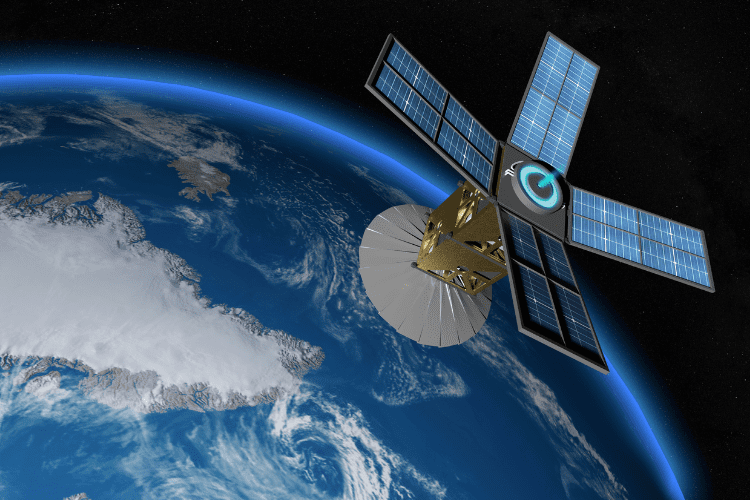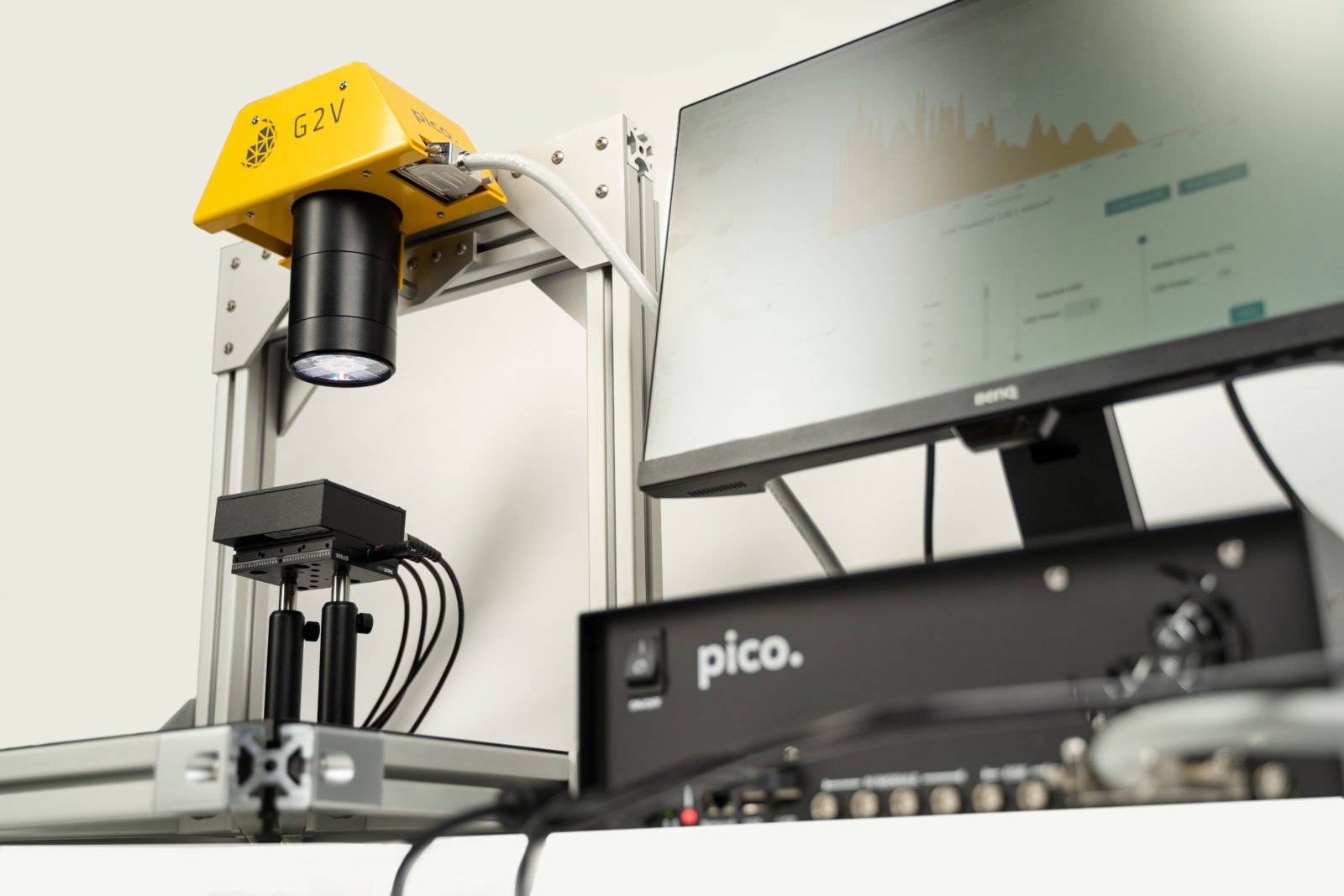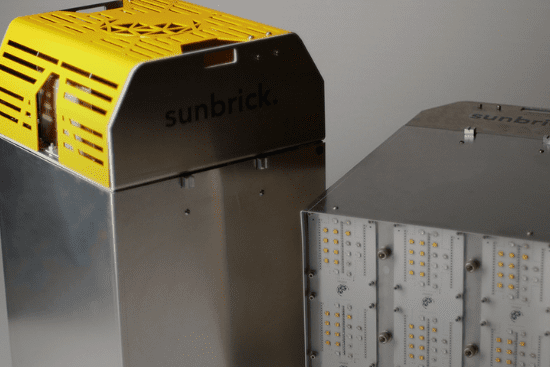








Test Your Satellite Under Full Spectrum Space Light
You’re making a small satellite and getting ready to launch into Low Earth Orbit. It’s carrying sun sensors, star trackers, altitude control subsystems, and solar cells to power it all. Countless hours have been spent miniaturizing and customizing your technology and now your mission critical moment has arrived, testing.
It all comes down to if you can find a creative and reliable way to get your existing light source to accurately assess solar charging conditions of space.
Your mission shouldn’t be at the mercy of an instrument’s inflexibility.
G2V’s LED solar simulators output large-area, full-spectrum light replicating conditions found in outer space and beyond, so you can confidently test your entire solution in your lab, for conditions anywhere you can imagine.
You’re reaching for the stars. We’ll provide the sun.
Featured Innovations
The Most Advanced Technology For Your Out Of This World Projects
Your cubesats are sophisticated, shouldn’t your solar testing equipment also be?

Pico™ AAA LED Solar Simulator for CubeSats
You need to test and validate your state of the art sensors without compromising on spectral quality. The Pico™ small-area solar simulator provides exceptional spectral match, spatial uniformity, and temporal stability, so you can reproduce the spectrum on or off the planet. With our Pico™, your advanced projects no longer need to wait for testing technology to catch up.
- Up to 32 tunable channels to characterize your devices with terrestrial or extraterrestrial spectra
- Instrumentation testing confidence with >10,000 hours or 2 year warranty
- Optional IV and EQE modules aid in automating solar cell characterization
- Minimal warm up time and NO manual calibration
Ground-test your cubesats with reliable engineered sunlight.

Sunbrick™ AAA LED Solar Simulator for CubeSats
You're preparing for launch, the difference of light from launch to decommission is vast, complicated, and unnerving. Wouldn’t it be nice to take away some of your trepidation if you could ground-test? The Sunbrick™ large-area solar simulator provides a tileable solution to test cubesat, from 1U to 16U or larger. Our Sunbrick™ has scalability without sacrificing spectral matching on Earth, in Low-Earth Orbit (LEO), or beyond.
- Large Class A area of 20 cm by 20 cm (and larger) to fully illuminate your satellite
- Up to 36 tunable LED channels to produce any Earthly or extrasolar spectrum
- Minimal warmup time and NO manual calibration
- Automate testing cycles through Python API and LabView DLL
Large scale reliable testing for those with astronomical idea.
Featured Innovation
The Sunbrick Class AAA LED Solar Simulator
Better testing illuminates the future with higher-quality predictions.
Your CubeSat depends on sunlight, whether it’s in star trackers, failsafe recovery systems, or solar battery charging. It’s going to be bathed in unfiltered sunlight for a good portion of its operational life, and you need to know if your satellite infrastructure can handle the spotlight.
G2V’s Sunbrick Class AAA LED solar simulator provides full-spectrum AM0 sunlight in a large 20 cm x 20 cm area and is tileable into arrays of arbitrarily large sizes. Whether your CubeSat is a cube 10 cm long in each dimension, or larger, the Sunbrick can give you the high-quality space solar simulation you need.
Some of the Sunbrick’s features include:
- Large Class A area of 20 cm x 20 cm, tileable to arbitrary sizes
- Calibrated to AM0, AM1.5G and any supplied custom spectra
- Automation-capable through Python API and LabView DLL
The Sunbrick gives you a full-scale space spectrum and trustworthy test results.


Scientific discoveries are your job, solar simulator knowledge is ours
With all the existing light reliant sensors packed into your project and new technology on the horizon, you may find yourself checking endless vendor websites comparing solar simulators to determine the best value in order to stay up to date and maximize your next budget. You shouldn’t need to spend hours searching just to get an answer, so we did it for you.
We have compiled a comprehensive guide on the Total Cost of Ownership(TCO) between solar simulators.
Our guide will walk you through the basic considerations in terms of cost-to-benefit ratio, performance metrics for choosing between different simulators in the market, explain the factors in a purchase decision like initial cost and upkeep expenses, and discuss why choosing the right simulator is key to advance scientific discovery.
Maximize your time and save your budget
Accurate Star Tracking for CNES Engineers
Problem: CNES, France’s space agency was developing the star tracker for the rover of the 2024 Martian Moon eXploration (MMX) mission, and needed an accurate way to ground-test this vital part of their altitude and orbital control (AOCS) subsystem.
Outcome: CNES engineers were able to individually tune LED channels to probe device sensitivity under different illumination conditions. They made a custom jig for testing at different angles and were so happy with the results that they quickly loaned the instrument to colleagues for their work on solar modules.
G2V's FAQs
No. Typically our customers turn the solar simulator’s output off and on. The short LED warmup time and absence of excess thermal emission mitigate the need for a shutter for many users.
The answer depends somewhat on the product model in consideration. For any product models that only cover wavelengths from 400 nm and above, no UV protection is needed, although we do recommend safety goggles for the strong blue light (and for many of the same reasons you wouldn’t stare at the sun). For solar simulators that include 350 nm – 400 nm coverage, we recommend wearing protective clothing or goggles for any body parts that may be under the simulator’s irradiance for longer than the allowable maximum exposure times. Note that our solar simulator is NOT designed for human exposure.
Our maximum spectral range is currently from 350 nm to 1500 nm. While there are some LEDs that reach higher and lower wavelengths, their performance and cost are not quite at the level needed for a robust and competitive solar simulator solution. G2V is always monitoring LED material developments, however, so if a wider spectral range is needed for your application, get in touch and we can discuss the possibility of a custom solution, or the inclusion of such a solution in our product roadmap.
There are several parts that require light to test. This includes your cubesats photovoltaic system, solar sensor, and star tracker. Each one of these play a critical role in the successful launch of your cubesat. Without testing these systems pre launch the chances of your project being successful drops.
Our solar simulators give you AAA light quality to ensure your ground testing is analogous to AM0 conditions. It allows you to ground test any system requiring light. You are already required to test thermal vacuum test, thermal circulation test and thermal balance check, isn’t it about time you tested your other cubesat parts?
Knowledge Base
Our Expertise. Your Home Base.
We know your time is valuable. This is why we make sure that our customers have access to resources that help them understand the nuances of solar simulators, their industry uses, and applications. Visit the knowledge base to learn more about LED illumination, Class AAA standards, Photovoltaics and much more.
IEC 60904-9:2020 Standard for Solar Simulators
In our modern era, nearly every industry has standards that set baselines for ensuring its associated products are safe and suitable to perform intended tasks. Solar simulation – reproducing sunlight – is no different, having standards that specify the requirements for solar simulators, and...
Solar Simulation
Discuss your light needs with one of our solar simulator experts
Whether you’re developing a satellite to vet new spacecraft instrumentation, or preparing to set up a multi-satellite network for reliable space-to-ground data communication, you require a flexible lighting solution to fit your needs.
You’re excited about your boundary-pushing work, passionate about minimizing risk, and getting those critical details right before launch day.
We want to share in your accomplishments with you.
Get in touch so we can discuss how we can help your satellites get through launch to decommissioning through better test instruments.
